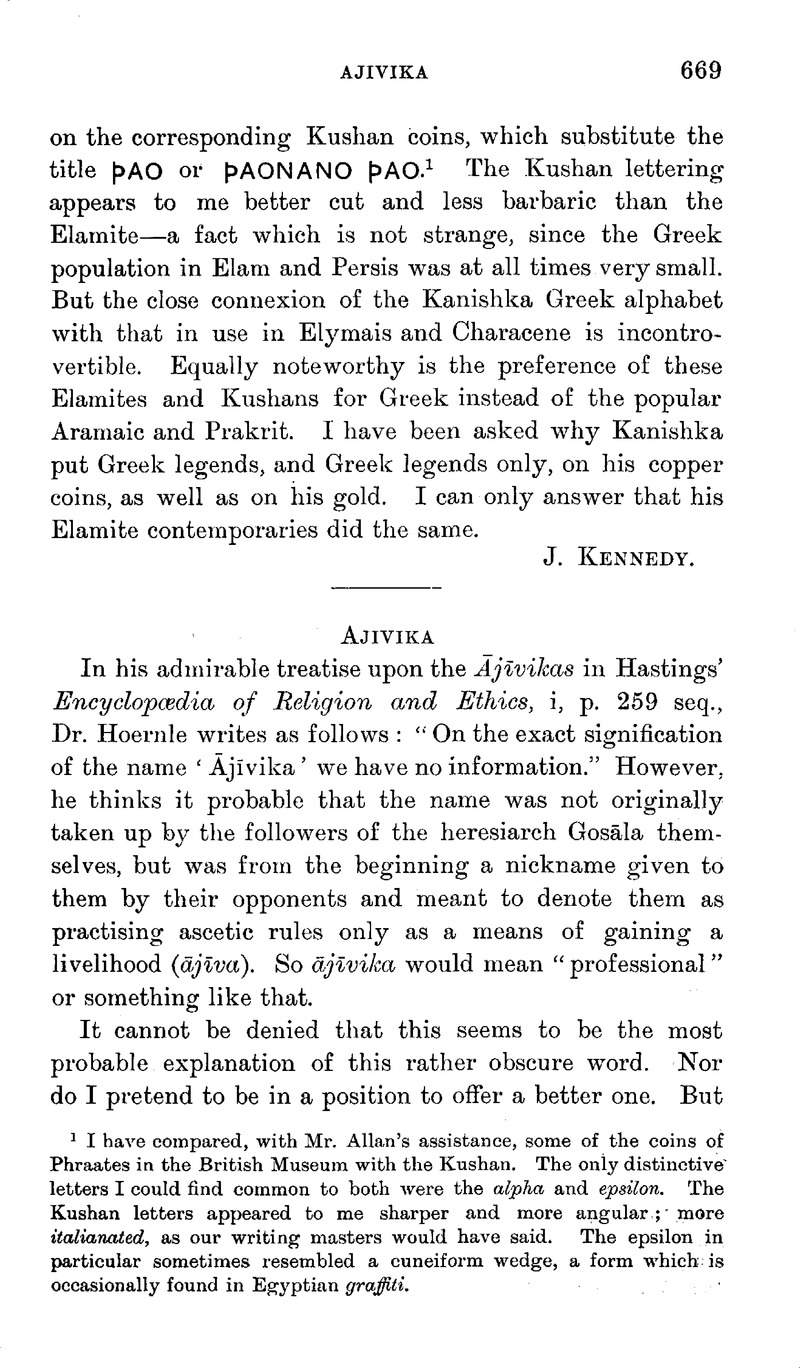
page 669 note 1 I have compared, with Mr. Allan's assistance, some of the coins of Phraates in the British Museum with the Kushan. The only distinctive letters I could find common to both were the alpha and epsilon. The Kushan letters appeared to me sharper and more angular; more italianated, as our writing masters would have said. The epsilon in particular sometimes resembled a cuneiform wedge, a form which is occasionally found in Egyptian graffiti.
page 670 note 1 Of course, I owe the following indications to the St. Petersburg Dictionary and to the article by Dr. Hoernle already mentioned.
page 670 note 2 Makkhali, because of the change of r into l, must, of course, belong to an Eastern dialect, probably the Māgadhī.
page 671 note 1 As for Patañjali's explanation of this sūtra (M.Bh. iii, p. 96) see Weber, , Ind. Stud. ii, 174Google Scholar f., quoted by Dr. Hoernle.
page 671 note 2 Hemacandra in the commentary upon Abhidhānacintāmaṇi, v, 795, says that maṃkha was = magadha, “a bard.”
page 671 note 3 Patañjali mentions Skanda and Viśakha too.
page 672 note 1 Devalaka or devala was a man who gained his livelihood by carrying about idols and showing them to the people (schol. ad Pāṇ. v, 3, 99; M. Bh. ). Cf. Amarakośa, ii, 10, 11, devājīvī tu devalaḥ. He was also called a dāivalaka (Hār. 150) or bhāuta (ŚKDr.).